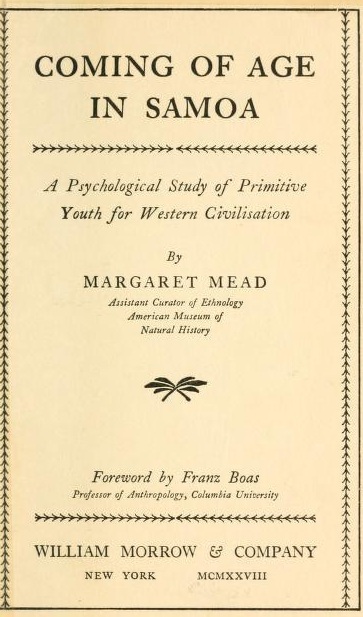Coming of Age in Samoa, by Margaret Mead
The debate around Margaret Mead’s 1928 Coming of Age in Samoa is in this respect illuminating. Mead offered the image of a harmonious society with a liberal attitude towards sexuality. Her book had a huge social impact and became the bible of an entire generation.


Margaret Mead
Margaret Mead, (born December 16, 1901, Philadelphia, Pennsylvania, U.S.—died November 15, 1978, New York, New York), American anthropologist whose great fame owed as much to the force of her personality and her outspokenness as it did to the quality of her scientific work.
Mead entered DePauw University in 1919 and transferred to Barnard College a year later. She graduated from Barnard in 1923 and entered the graduate school of Columbia University, where she studied with and was greatly influenced by anthropologists Franz Boas and Ruth Benedict (a lifelong friend). Mead received an M.A. in 1924 and a Ph.D. in 1929. In 1925, during the first of her many field trips to the South Seas, she gathered material for the first of her 23 books, Coming of Age in Samoa (1928; new ed., 2001), a perennial best seller and a characteristic example of her reliance on observation rather than statistics for data. The book clearly indicates her belief in cultural determinism, a position that caused some later 20th-century anthropologists to question both the accuracy of her observations and the soundness of her conclusions.
Continue reading at Encyclopedia Britannica:
You can check out the 1928 edition on the Internet Archive, or purchase a newer edition on the publisher's website:
Brain Picking's Maria Popova beautifully presents fragments of Margaret Mead's letters and essays in the articles below. Read on if you'd like!
Life Is Like Blue Jelly: Margaret Mead Discovers the Meaning of Existence in a Dream
Legendary Anthropologist Margaret Mead on the Fluidity of Human Sexuality in 1933




















0 comments
Sign in or create a free account